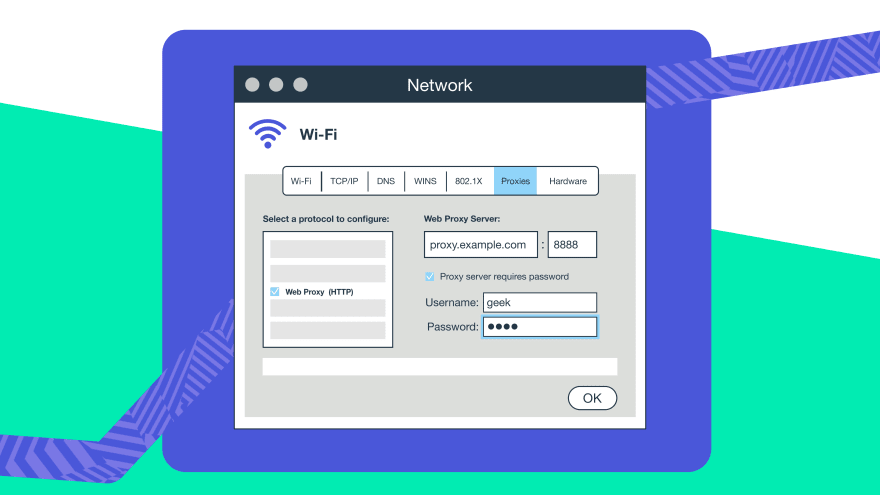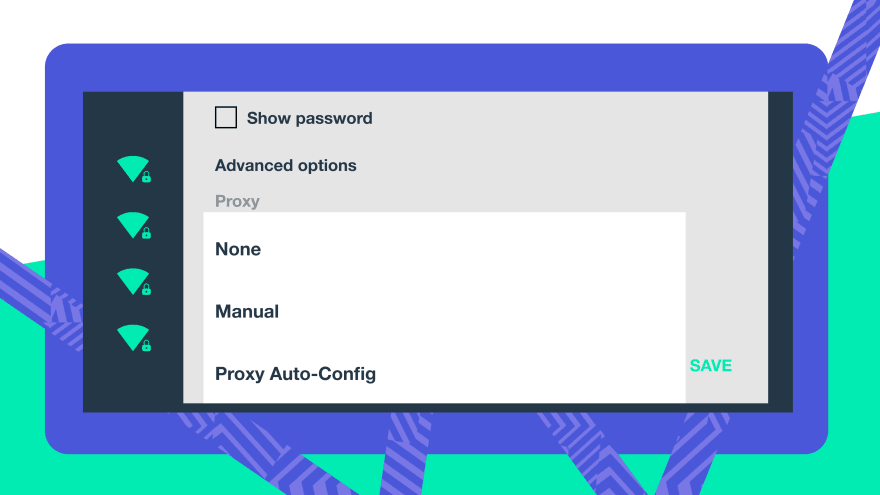The primary function of a proxy is to make users anonymous and secure their privacy. But in reality a proxy can reveal the true IP address or inform a website that its visitor uses a proxy.
So what is the deal with an “anonymous” proxy?
What is an Anonymous Proxy?
A proxy server is used when a user needs to access network resources, such as the Internet. A user connects through a proxy server instead of directly connecting to the web hiding the true identity.
Some proxy types (transparent proxies) allow websites to see the real IP address associated with each host request, non-transparent proxies (anonymous) do not show the original IP address of a web server's visitor but reveal that a user uses a proxy to reach the web source.
An anonymous proxy, however, can do more. Use cases are widely known:
- an anonymous proxy keeps private the browsing history;
- helps to avoid content blocks and targeted marketing, and it blocks online ads;
- provides access to geo-restricted websites;
- runs automated tasks;
- it speeds up loading times when caching configuration is set up.
How Does Anonymous Proxy Work?
An anonymous proxy like other proxy types serves as a middleman between a user and a web server. It intercepts browsing requests and routes them through a proxy server returning results to a user. The information a user sends or receives does not go from the original IP address but rather from a different server. The user’s data remains hidden, and the websites get them for somebody else. So an anonymous proxy allows surfing the Internet without revealing the real IP address.
What levels of proxy anonymity exist?
The term “anonymous “ is often used for marketing purposes thus the concept is misjudged by some users. Anonymous proxies are not completely anonymous thereby are not fully secure.
One must be careful by handling sensitive data using anonymous proxies, because their levels of anonymity differ and depend on their types.
Anonymous proxies can be divided into the three groups:
Transparent Proxy
Transparent proxies pass all information about a user and show a user’s true IP address. These are often used in schools that block access to websites with disturbing content. Companies use transparent proxies to route traffic and control which websites their employees can address while on work. Transparent proxies are often used in public wifi networks to authenticate users. When connecting to the Internet via public wifi users are redirected to a sign-in page and do not even know that they access the web through a proxy.
The connection through a transparent proxy is not encrypted and thus is not secured.
Anonymous Proxy
An anonymous proxy does not reveal users’ true IPs and their locations. However they inform websites that their visitors use a proxy, thus they can be easily blocked by a website that limits proxy access.
If you would like to access local content in other locations you need to use an elite proxy.
Elite Proxy
Elite proxies give a user the highest level of anonymity. They do not pass any information about a user: neither their true IP address nor personal data and they do not identify themselves as a proxy while making network requests.
Why use high-anonymous proxies when there are anonymous proxies? As many websites block anonymous proxies by default identifying them as proxies, using elite proxies allows one to avoid the proxy check and access any source a user sends a request to.
NB:
As for sensitive data security, elite proxies are the same as anonymous proxies. Both belong to a third party. If it is not a trusted seller a user might end up being a victim of a cybercrime.
What’s the Difference between Anonymous Proxy and VPN?
Both — a VPN anonymizer and an anonymous proxy — hide the source of browsing activity by routing traffic to the server that conceals the real IP address and accesses the target website as a middleman.
Contrary to what is believed a VPN service does not provide a user ultimate anonymity. VPN acts as a tunnel: once addressing the Internet through VPN an encrypted connection occurs between a VPN server in the chosen location and a user’s network device.
An anonymous proxy does not guarantee full anonymity while browsing the Internet as well as VPN. Their main task is to encrypt the exchanged data between a device and the network, so a user’s data remains unusable to hackers.
The main difference between VPN and an anonymous proxy is that VPN secures traffic from a single IP address, while a proxy can utilize millions of IPs for various automated scraping and research tasks.
How to Set Up and Use Anonymous Proxy?
An anonymous proxy can be set up in a browser (Explorer, Mozilla, Chrome, Safari), on Mac and Windows operating systems, and on IOS and Android devices. The manual configuration is seamless and effortless.
Windows
Go to “Windows Settings” Menu → “Settings” → “Network & Internet” → “Proxy”. On the manual setup section set the “Use a proxy server” → “On” option → Enter the address of your proxy server and a proxy port number → Click “Ok”.
Mac
Go to “System Preferences” → “Network” → “Advanced” → “Proxies” → Select a protocol to configure → click “Secure Web Proxy” (HTTPS) → Type the address of the proxy server and its port number → If the proxy is password-protected, enter the account name and password → Click "Ok".
Chrome
Chrome uses Windows 10/11 or macOS proxy settings by default. If you wish to change your Chrome proxy settings, follow the following steps:
Go to “Settings” on the Chrome toolbar → “Advanced” → “Settings” → “System” → Open your computer's proxy settings → “Manual proxy setup” → Enter the address of your proxy server and a proxy port number → Click “Save”.
Safari
Just like in Google Chrome Safari operating system uses proxy settings by default. If you would like to change a proxy configuration, follow these steps:
Go to the Safari toolbar → “Preferences” → “Advanced” tab → “Proxies” → “Change settings” → Go back to the instructions on macOS on setting up a proxy server and follow them.
Firefox
Firefox does not use proxy settings by default from the OS. Here you can know about Firefox Proxy setup:
Open the “Firefox menu” → “Internet options” → “Advanced” → open the Network tab → Go to the “Connection settings” → “Manual proxy configuration” → Enter the address of your proxy server and a proxy port number → Click "Ok".
Edge
Edge is a built-in browser in Windows 10/11, and the browser will use the settings in Windows 10/11 by default unless you change them.
Go to “Settings” → “Advanced settings” → “Open proxy settings” → Go back to the Windows 10/11 instructions and follow them to complete the configuration.
Android
It is better to use a VPN service on Android because when using a proxy server you need to configure the settings for each network you use. VPN thereby will cover all traffic coming through a mobile device.
Open the “Android settings” → the long press on the name of the “Wi-Fi network” → “Modify Network” → Proceed to "Advanced Options” → Click on "Manual" to change the proxy server settings and then enter your hostname and proxy port → Click “Save”.
IOS
Go to "Settings" → “Wi-Fi” → Select the active Wi-Fi network → Go to the “HTTP proxy” → Click on "Configure Proxy” → Tap on the manual → Enter the hostname and proxy port → If needed enter the authentication username and a password.
There are a few reasons why to remain anonymous while surfing the Internet.
Anonymous proxies help to avoid targeted ads and aggressive marketing campaigns. They also allow one to bypass geo-blocking and access restricted content.
Enterprises deploy proxies to filter all incoming and outgoing requests, boost security, prevent employees data theft, manage site access, ensure load balance, and cache files to make network devices run faster and more efficiently.
Anonymous proxies also run automated tasks: they help to avoid captcha, and bypass firewall restrictions. With anonymous proxies it is easier to manage scrape tasks on different levels, compare prices, manage multiple accounts, monitor SEO, test ads, enhance bot activity and more.
Each request a user sends to the network via HTTP protocol sends a header. It records the information about the device. A proxy alters the header’ data at different levels based on its anonymity level.
There are several types of proxies, including transparent proxies, that allow websites to understand what visitors view their sites and see their IPs; non-transparent (anonymous) proxies that do not show the original IP address but manifest themselves as proxies and so might be blocked by particular websites; and the safest — elite proxies.
Despite the above-mentioned, anonymous proxies are irreplaceable while scraping the web, introducing automated business tasks and other online activities that require the usage of IP pools.
This post was originally published on SOAX blog.











Top comments (0)